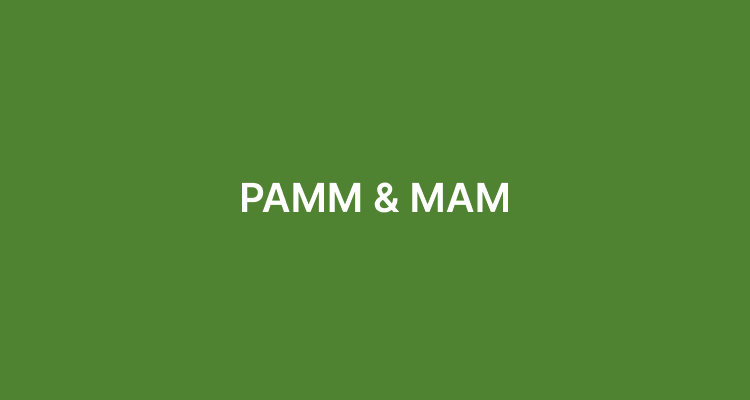If you’re interested in investing your money in the financial markets, you may have come across the terms PAMM and MAM account. These types of accounts are gaining popularity among investors due to their potential to provide a hands-off approach to investing, allowing traders to manage multiple accounts at once.
In this article, we will take a closer look at PAMM and MAM accounts, explaining what they are, how they work, and their benefits. So, let’s dive in and explore the world of PAMM and MAM accounts!
What is PAMM and MAM Account?
PAMM and MAM accounts are two different types of managed account services provided by brokers to traders. PAMM stands for Percent Allocation Management Module, while MAM stands for Multi-Account Manager. Both services allow traders to manage multiple accounts through one master account, with each sub-account’s allocation based on a percentage of the total funds in the master account.
The key difference between PAMM and MAM accounts lies in how the trading decisions are made. In a PAMM account, the master account’s manager is responsible for making all the trading decisions, while the sub-accounts receive the same trades based on the percentage allocation. In contrast, in a MAM account, the master account’s manager can allocate trades differently to each sub-account, based on factors such as risk tolerance and investment objectives.
How Do PAMM and MAM Account Work?
To understand how PAMM and MAM accounts work, let’s take a closer look at each type of account
PAMM Accounts
In a PAMM account, the manager trades on behalf of all the sub-accounts, with each sub-account receiving the same trades based on the percentage allocation. For example, if the master account has $100,000 and the allocation percentage for a sub-account is 5%, then the sub-account will receive $5,000 worth of trades. The profit or loss is then distributed to each sub-account based on the percentage allocation.
The manager of the PAMM account earns a performance fee based on the profits generated. Usually ranging from 20% to 50% of the profits. This fee is only paid when there are profits generated, providing an incentive for the manager to make profitable trades.
MAM Accounts
In a MAM account, the manager can allocate trades differently to each sub-account based on factors such as risk tolerance and investment objectives. For example, a conservative sub-account may receive fewer high-risk trades, while an aggressive sub-account may receive more. The profit or loss is then distributed to each sub-account based on their individual allocation.
The manager of the MAM account earns a performance fee based on the profits generated. Which is usually negotiated with each sub-account. This fee is paid regardless of whether there are profits or losses, providing a steady income for the manager.
Benefits of PAMM and MAM Account
There are several benefits of PAMM and MAM accounts, including
- Diversification. PAMM and MAM accounts allow traders to manage multiple accounts at once, providing diversification across different markets and asset classes.
- Professional Management. PAMM and MAM accounts are managed by experienced traders who have a track record of success. They provide investors with access to professional management.
- Passive Investing. PAMM and MAM accounts provide a hands-off approach to investing. They allowing investors to sit back and let the manager do the work.
- Customization. MAM accounts offer customization options. They allow sub-accounts to have different allocation percentages and trading strategies based on their individual needs and goals.
- Transparency. PAMM and MAM accounts offer transparency through online reporting. They provide investors with real-time access to their account performance and trading activity.
- Low Minimum Investment. PAMM and MAM accounts typically have a lower minimum investment requirement compared to other managed account services. They make them accessible to a wider range of investors.
Conclusion
In conclusion, PAMM and MAM accounts are two types of managed account services. They allow traders to manage multiple accounts through one master account. While PAMM accounts provide a hands-off approach to investing, MAM accounts offer customization options based on individual needs and goals.
Both types of accounts provide several benefits, including diversification, professional management, and transparency, making them a popular choice for investors looking for a passive approach to investing. As with any investment, it is important to carefully consider the risks and benefits before investing in a PAMM or MAM account and to work with a reputable broker to ensure a successful investment journey.
